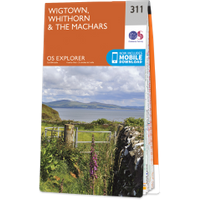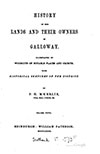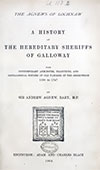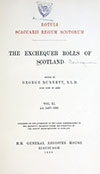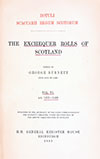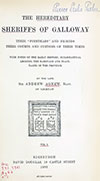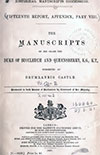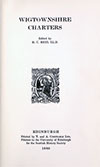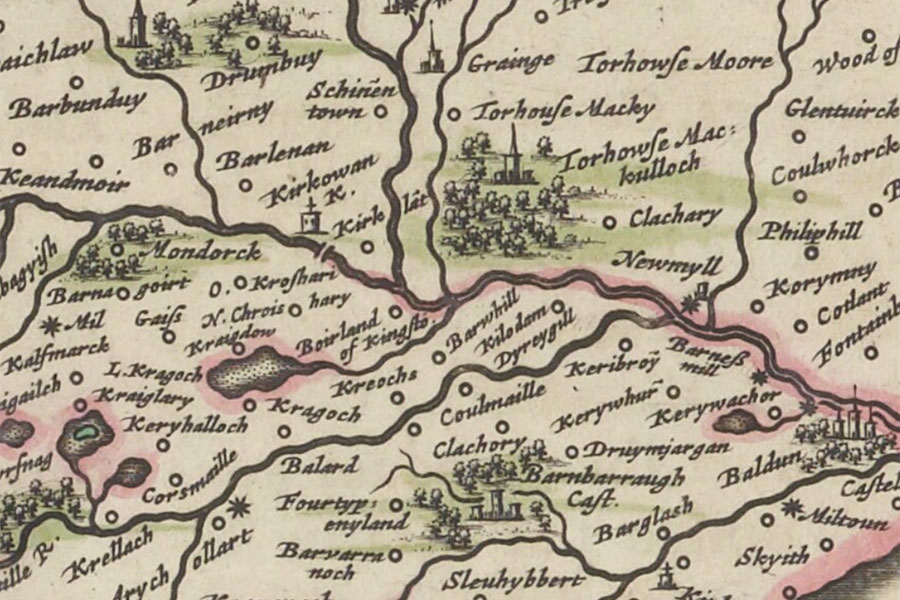

Joan Blaeu, Amsterdam, 1654map image courtesy of NLS
Torhouse is an 18th century laird’s house which incorporates the remains of an earlier tower.
The site is a good one defensively, occupying a low mound amid boggy ground and situated on a promontory surrounded on three sides by a bend in the River Bladnoch. The tower is originally thought to have consisted of two storeys plus an attic and would most likely have been rectangular in plan.
In 1456 the lands of Torhouse may have been owned by William Stewart of Dalswinton however in 1459 Affric MacDowall received a sasine of Torhous and Eddindorauch or Essendorauch. She seems to have married Finlay McCulloch who in 1466 was charged, along with his sons, Norman and George, with depriving Ninian Spot, Bishop of Galloway, of “corn, cattle, and goods” which he was due in lieu of rent from Nevin MacIlroy or McHenry. Finlay was described as “the most powerful of his name after the Laird of Myrton” from whom his branch of the McCullochs were descended.
The McDowalls and McCullochs were two of the most prominent families in the area at the time and there seems to have been several instances of intermarriage between them. Agnes McCulloch, the second daughter of Sir Alexander McCulloch of Myreton, married Fergus MacDowall and Catharine McCulloch, Sir Alexander’s third daughter, married Patrick MacDowall of Logan some time before 1494.
Affric MacDowall is mentioned again in 1491 when she, as Effric Makdowell, and her husband, Patrick McKee of Cumloden or Camlodan, sued Rankin Mure who owned part of the lands of Torhouse (probably Torhousemuir). A Normand McCulloch and George McCulloch are mentioned in the document. It seems likely therefore that it was Affric who was responsible for splitting the 20 merkland of Torhouse, each with a surname attached to presumably distinguish them from one another and signify ownership, into the 10 merkland of Torhouse, also known as Torhouse_McCulloch, the 6 merkland of Torhouse-Mure, now known as Torhousemuir, and the 4 merkland of Torhouse-McKie, now known as Torhousekie.
Given the near four decades between these two mentions it may be that this second Affric was a daughter of the first, or perhaps she remarried and was long-lived. Normand and George are likely to be the sons of Finlay and Affric. In 1495 she is referred to as “Affrik dochter of Makdowall, lady of Torhous”, perhaps suggesting that she was indeed the daughter of the earlier Affric.
In 1501 Ninian or Norman McCulloch received a sasine of Torhous and Esderach or Esdarrach and in 1503 Finlay McCulloch received a sasine of Torhous. George seems to have succeeded his father and had a charter from him in 1518.
An Alexander Mure of Torhouse is mentioned in a charter of 1520 but Alexander Mure of Torhouse-Mure is mentioned in another charter of 1527 so this would seem to refer to Torhousemuir rather than Torhouse.
In 1526 George was involved when Thomas Maclellan of Bombie was murdered in Edinburgh by James Gordon of Lochinvar, Sir William Douglas of Drumlanrig and their supporters.
George continued in his ownership of Torhouse certainly as late as 1547 however by 1557 his eldest son John had taken possession of the property. John married to Helen Agnew, daughter of Andrew Agnew, the Sheriff of Galloway, and they had a daughter, Margaret. By 1560 John was sheriff depute to Patrick Agnew and in 1574 he bought the 3 merk and 4 merk lands of Torhous-Makke from Robert Ashyanne or Ashennan of Dunjop.
In 1579 Margaret married George McCulloch, son of Malcolm McCulloch of Craichdow. John McCulloch died in 1593 and Alexander, son of Margaret and George, succeeded. He married Margaret Gordon and in 1619 he owned the lands of Torhouse-McCulloch, Eschandarroch, Torhouse-McKie, Cairngorran, Auchneacht and Craichdow.
Torhouse is marked on Gordon’s map of the area, dated to between 1636 and 1652 but based on Pont’s late 16th century work, as a tower named Torhous Mackullo.
Alexander was still in possession in 1651 but was later succeeded by his son, Hugh, who in 1644 had married Cecil, daughter of John McCulloch of Myreton.
In 1684 Torhouse was described as the only “considerable edifice” in the parish of Wigtown and was included in a list of “considerable houses”, described as “Castells”, in the part of Wigtownshire close to Wigtown itself. At this time it was in the possession of Hugh and Cecil’s eldest son, George. He married Janet Ramsay, daughter of Ramsay of Boghouse (in the parish of Mochrum) in 1674 and had a sasine of Torhouse-McCulloch and other lands in 1681. He gave the lands of Torhousekie to his brother, John McCulloch.
George and Janet had two daughters and the elder, Elizabeth, succeeded. She married her cousin, William McCulloch of Kirkclaugh and in 1724 William was granted a sasine of Torhouse. During the 16th and 17th centuries Torhouse had been used as collateral for loans and it may be that this marriage was in part a way of repaying a loan and keeping the property within the McCulloch family.
During the 18th century the tower was remodelled and extended to the south and east to create a considerably larger building with a symmetrical façade. The front of the house now consisted of five regular bays over two storeys, with an elaborate central doorway flanked by panelled jambs and with an arched top decorated with rusticated voussoirs.
Above the door is an empty niche for an armorial panel, which can now be found at Redbrae farm. It carries the arms of the McCullochs and those of Boyd of Trochrig and the date 1744, said to mark the marriage between John McCulloch and Mary Boyd, daughter of David Boyd, a surgeon in Wigtown. This has also been taken to be the date at which the tower was altered.
William died in 1749 and was succeeded by eldest son, John, who was Collector of Customs at Wigtown and later Comptroller, who had a sasine in 1750. It may be that either the stone was back-dated to commemorate the marriage a few years earlier or that John started the work before his father died. Elizabeth died in 1780.
The floorplan had now changed to consist of two rooms to the front of the house and two to the rear, with a central hallway and staircase leading up from the front door. The house was probably re-roofed at the same time and features a carved cornice.
The window surrounds on the front of the house are all square-edged however those to the rear, where there are only three bays, feature three different styles – square-edged, chamfered and roll-moulded. This last style is the earliest, possibly 16th century, and is likely to represent reused elements from the old tower. The central bay of the rear features windows on three levels but this may be as a result of the positioning of the new staircase rather than a legacy of the old tower.
Later an extension was added to the north of the building and a doorway knocked through at ground level to the east of the fireplace.
John and Mary had four daughters and four sons, the eldest of whom, David, had a sasine of Torhouse in 1786. He died in 1822 without issue having been predeceased by his brothers who also didn’t leave any children. Torhouse passed to his sisters who became co-heiresses. One of the sisters, Janet, seems to have emigrated to America but I haven’t been able to ascertain what happened to Torhouse at this time.
Later it seems to have been owned by Andrew Brown Tosh who died some time before 1850. In 1851 Agnes Brown, “relict of Captain Pratt, and niece to the late David McCulloch, Esq., of Torhouse” died and in 1865 Janet Brown, daughter of Andrew Brown Tosh of Torhouse, married William Fraser of Culbokie.
On the Ordnance Survey 6 inch map of Wigtownshire published in 1850 the building is shown within substantial formal gardens however by the time of the Ordnance Survey 25 inch map of Wigtownshire published in 1895 the building is only shown as an outline suggesting that its roof had been removed by this time. The property is now a roofless ruin.
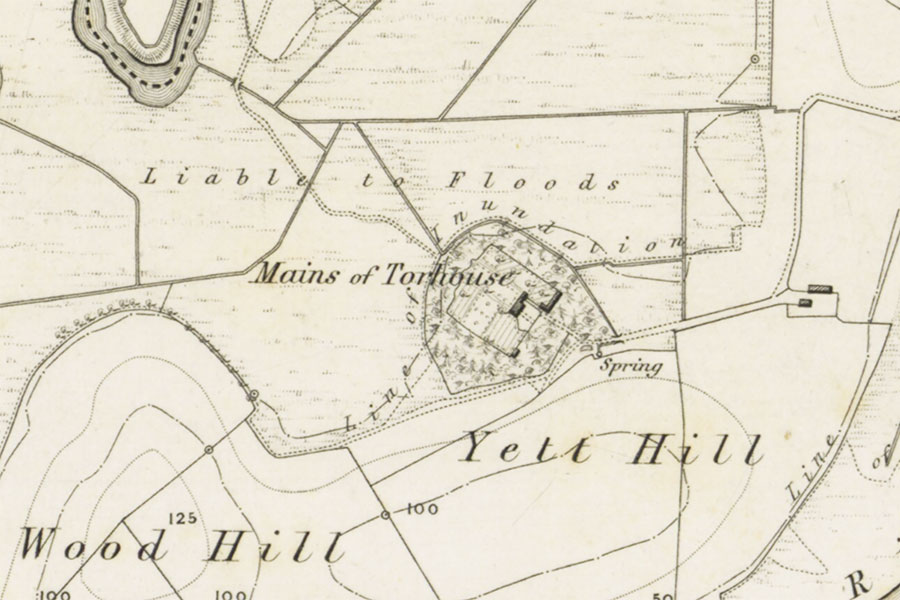
Ordnance Survey, 1850map image courtesy of NLS
To the east of Mains of Torhouse (at NX 38854 55043), closer to the river, are the ruins of a small building which have been interpreted as being the remains of a tower house, supposing that the laird’s house was in fact built from scratch in the 18th century. However this building looks to me to be an agricultural building of some description and I believe that the laird’s house was developed from an earlier tower on the same site.
Alternative names for Torhouse
Mackulloch; Mains of Torhouse; Torhous Mackullo; Torhous-McCulloch; Torhouse Castle; Torhouse Culloch; Torhousis; Torhowse; Torhowse Mackulloch; Torrhouse; Torrous


